This article needs additional citations for verification .(December 2024) |

The Spy Museum is the world's first public museum of international espionage, located in Tampere, Finland. The museum was founded in 1998 by Teppo Turja. [1]
This article needs additional citations for verification .(December 2024) |

The Spy Museum is the world's first public museum of international espionage, located in Tampere, Finland. The museum was founded in 1998 by Teppo Turja. [1]
The museum is located in the centre of Tampere in the old Finlayson factory building, which has been converted into a cultural centre. The museum is visited by over 20 thousand people every year. Approximately half of the visitors are from outside Finland, particularly from Russia, the United States, Germany, France, Japan and the United Kingdom.
Espionage has a significant role in history. Even today, espionage affects all aspects of society life. In espionage, even individual people have had a greater effect on the history of the world than official governments or heads of state. Because of this, the founding of a spy museum was thought necessary.
The museum is privately owned. The basic installation, which covers espionage from a neutral point of view, concentrates on inspecting espionage through individual spies and the methods and tools they used. Many sorts of material is presented, for example nuclear power espionage from the time of the Cold War.
One of the museum's educational goals is to make children and youths interested in museums in general. Naturally, the conservation of unusual and unique objects for future generations is one of the basic functions of the museum. The image of espionage portrayed by the media and the entertainment industry is largely glamorous and fictitious. The museum intends to correct this, even though it also includes entertainment elements.
The museum presents some of the world's famous spies, such as Kim Philby, Ethel and Julius Rosenberg, Richard Sorge, Mata Hari, Oleg Gordievsky and Sidney Reilly, accompanied by a thorough description of their lives. Among the dozens of personal characters are the founder of the scouts movement Robert Baden-Powell and Finland's Marshall Carl Gustaf Mannerheim.
The museum organises pre-registered guided tours mostly in Finnish and in English. The guide book of the museum has been translated to German, Russian, Japanese, Polish, French, Spanish, Italian and Swedish. The museum also offers a non-serious "agent test". Participants of the test receive a recommendation letter to an espionage agency best fitting their skills as a souvenir. The agency in question could be MI6, GRU, Mossad, CIA, Säpo or Supo. The museum shop also offers espionage-related souvenirs.
The museum presents eavesdropping devices, covert microphones, miniature cameras, a lie detector, cryptography devices, radio devices, forgeries, maps, concealed weapons and optic devices. Visitors can also try out espionage devices for themselves. Among the devices they can use are invisible ink, an infrared vision device, a voice changer and a safe awaiting for its code to be cracked. The museum also has a secret room, and the bravest of the visitors dare to enter the pitch-dark espionage tunnel.
Espionage, spying, or intelligence gathering is the act of obtaining secret or confidential information (intelligence). A person who commits espionage is called an espionage agent or spy. Any individual or spy ring, in the service of a government, company, criminal organization, or independent operation, can commit espionage. The practice is clandestine, as it is by definition unwelcome. In some circumstances, it may be a legal tool of law enforcement and in others, it may be illegal and punishable by law.
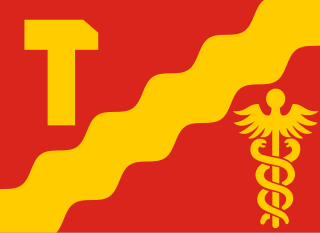
Tampere is a city in Finland and the regional capital of Pirkanmaa. It is located in the Finnish Lakeland. The population of Tampere is approximately 260,000, while the metropolitan area has a population of approximately 423,000. It is the 3rd most populous municipality in Finland, and the second most populous urban area in the country after the Helsinki metropolitan area.

Finland attracted over 6.8 million foreign tourists in 2018, with 53 percent coming from other European Union states. In 2017, the value added by tourism was about 4.6 billion euros, or 2.6% of the Finnish GDP, providing approximately 140,200 jobs.
The Venona project was a United States counterintelligence program initiated during World War II by the United States Army's Signal Intelligence Service and later absorbed by the National Security Agency (NSA), that ran from February 1, 1943, until October 1, 1980. It was intended to decrypt messages transmitted by the intelligence agencies of the Soviet Union. Initiated when the Soviet Union was an ally of the US, the program continued during the Cold War, when the Soviet Union was considered an enemy.

Lahti is a city in Finland and the regional capital of Päijät-Häme. It is located in the Finnish Lakeland. The population of Lahti is approximately 121,000, while the sub-region has a population of approximately 205,000. It is the 9th most populous municipality in Finland, and the sixth most populous urban area in the country.
The University of Tampere (UTA) was a public university in Tampere, Finland that was merged with Tampere University of Technology to create the new Tampere University on 1 January 2019.

The International Spy Museum is an independent non-profit history museum which documents the tradecraft, history, and contemporary role of espionage. It holds the largest collection of international espionage artifacts on public display. The museum opened in 2002 in the Penn Quarter neighborhood of Washington, D.C., and relocated to L'Enfant Plaza in 2019.

Moomin Museum is situated in the city of Tampere, Finland. Shown at the Moomin Museum are illustrations by Tove Jansson, 40 miniatures, tableaux about Moomin events and a small Moomin House. There are about 2,000 exhibits on display. Also shown is the original Moominvalley multimedia. The Moomin Shop sells gift items and the Moomin Library offers Moomin books in many languages.
Clandestine HUMINT asset recruiting refers to the recruitment of human agents, commonly known as spies, who work for a foreign government, or within a host country's government or other target of intelligence interest for the gathering of human intelligence. The work of detecting and "doubling" spies who betray their oaths to work on behalf of a foreign intelligence agency is an important part of counterintelligence.
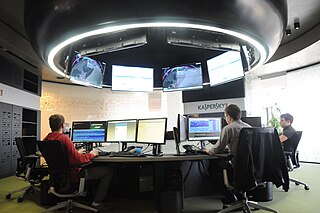
Kaspersky Lab is a Russian multinational cybersecurity and anti-virus provider headquartered in Moscow, Russia, and operated by a holding company in the United Kingdom. It was founded in 1997 by Eugene Kaspersky, Natalya Kaspersky and Alexey De-Monderik. Kaspersky Lab develops and sells antivirus, internet security, password management, endpoint security, and other cybersecurity products and services.
Technical intelligence (TECHINT) is intelligence about weapons and equipment used by the armed forces of foreign nations. The related term, scientific and technical intelligence, addresses information collected or analyzed about the broad range of foreign science, technology, and weapon systems.

The Tampere Central Square is a public square in the centre of Tampere, Finland, along the main street Hämeenkatu. The Central Square is located on the western shore of Tammerkoski and many important buildings in Tampere are located near it. These include the Tampere City Hall, the Tampere City Central Office Building, the Old Church of Tampere and the Tampere Theatre. The Central Square was called Kauppatori until 1936.
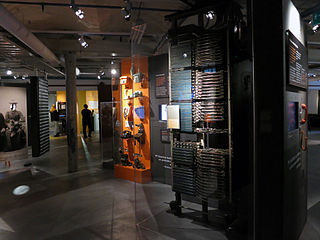
The Rupriikki Media Museum is a history museum devoted to mass communication. It is located in the Vapriikki Museum Centre, in Tampere, Finland. Rupriikki showcases media history. Collections include cellular phones, radios, telephones, computers, and press materials.

The Berlin Spy Museum is a private museum in Berlin which was created by former journalist Franz-Michael Günther. The museum opened to the public on 19 September 2015. Günther's aspirations were to create a museum devoted to the history of spies and espionage in the former spy capital of Germany. The museum is located in the central area of Potsdamer Platz, formerly known as the "death strip", as it lies on the perimeters of the wall which once divided East and West Berlin. The museum acts as an educational institution, with its permanent exhibitions bridging together centuries of espionage stories and tactics, immersing visitors in a multi-media experience. The museum particularly focuses on the World Wars and the Cold War through a range of a 1000 different exhibits and artefacts. Since its opening in 2015, 1,000,000 people have visited the museum and recently in 2020 it was nominated for the European Museum of the Year Award. The Berlin Spy Museum is partnered with the International Spy Museum in Washington, D.C., and many of the artefacts and installations within the museum have captured media attention around the world.
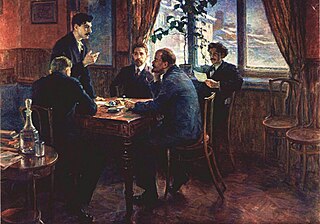
The first conference of the Russian Social Democratic Labour Party (RSDLP) took place in Tampere (Tammerfors), Grand Duchy of Finland, in December 1905. Held between the 1905 London and 1906 Stockholm party congresses at the Tampere Workers' Hall, the conference was an unofficial meeting of the Bolshevik faction of the party. It is particularly remembered for playing host to the first meeting of Vladimir Lenin and Joseph Stalin. The conference resolved to forgo participation in the new State Duma, as did most of the far left parties. They later reversed this decision in 1907.
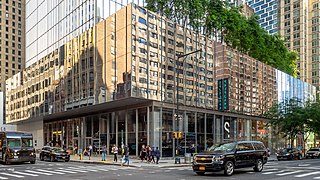
Spyscape is a contemporary entertainment and education brand focused on secrets. Spyscape's physical HQ in New York City is a 60,000-square-foot interactive museum created by London-based private investment group Archimedia and designed by Sir David Adjaye.
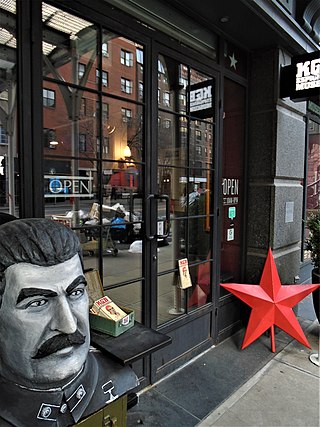
The KGB Espionage Museum was a museum dedicated to the unbiased presentation of historical and contemporary KGB espionage equipment and tradecraft. The museum opened in the Chelsea and Greenwich Village neighborhoods of Manhattan in New York City on January 17, 2019 and featured the world's largest collection of KGB-specific spy equipment. The museum offered interactive exhibits and guided tours. The museum closed in fall 2020 due to the impact of COVID-19 and its contents were auctioned.

Keskusta is a main district of the city of Tampere, Finland, formed by less than 20 suburbs in the city centre. Over 63,000 people live in Keskusta. It is located along the Tammerkoski rapids and its most important services include Tampere City Hall and the Market Hall.

Posteljooninpuisto is a French formal garden style park built in the 1930s in central Tampere, Finland, at the corner of Rautatienkatu and Itsenäisyydenkatu. At the corner of the park is the former head post office of Tampere. The park is also internally connected to the Tampere railway station located next to it, which the Finnish Heritage Agency has classified as a significant cultural environment. The park is owned by the city of Tampere.

Plevna is a former industrial building located in the neighbourhood of Finlayson in central Tampere, Finland, hosting a Finnkino movie theatre, the brewery restaurant Plevna and the Koskipanimo microbrewery.